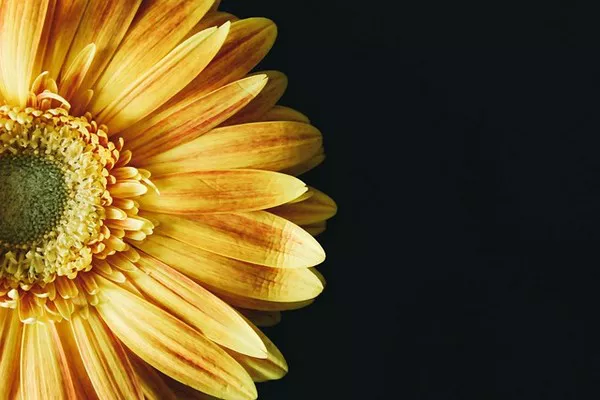Sunflowers, with their vibrant petals and towering stems, have long captivated human imagination and symbolized a myriad of meanings across various cultures, artistic expressions, and scientific inquiries. Beyond their undeniable beauty, these radiant blooms have been imbued with symbolism that transcends time and geography. In this exploration, we delve into the multifaceted meanings of sunflowers, uncovering their significance in art, culture, history, and science.
Cultural Significance and Historical Roots
The sunflower’s cultural significance is deeply rooted in history, dating back to ancient civilizations. Native to North America, sunflowers held a prominent place in the traditions of indigenous peoples. These vibrant plants, which track the sun’s movement throughout the day, became powerful symbols of devotion, endurance, and resilience. They were often associated with solar deities and were considered as representations of light, life, and positive energy.
During the 16th and 17th centuries, European explorers brought sunflowers back to their homelands from the New World. In the 19th century, the sunflower gained further prominence when it was introduced to Russia. In Russian culture, the sunflower came to symbolize a sense of hope, fertility, and prosperity. The plant’s ability to thrive in harsh climates and its tendency to face the sun became metaphors for the Russian people’s resilience and ability to find positivity even in challenging circumstances.
See Also: March Flower: Discovering the Charm & Symbolism of Daffodils
Artistic Expressions and Symbolism
The art world has also embraced sunflowers as a symbol of profound meaning. One of the most renowned examples is Vincent van Gogh’s series of paintings titled “Sunflowers.” Van Gogh’s fascination with sunflowers went beyond their physical appearance. In his works, the sunflower became a representation of friendship, gratitude, and the passage of time. The vibrant yellow petals and their gradual wilting symbolized the ephemeral nature of life. Van Gogh’s use of color and texture captured the essence of the sunflower, making it an enduring icon of art history.
In literature, the sunflower has been employed as a symbol of adoration, loyalty, and unwavering love. It often appears as a metaphor for individuals who remain steadfast in their devotion, much like the sunflower’s unwavering gaze toward the sun. This imagery has found its way into numerous poems, stories, and novels across various cultures.
Spiritual and Philosophical Connotations
Beyond its cultural and artistic significance, the sunflower carries spiritual and philosophical connotations. In many belief systems, the sunflower embodies spiritual enlightenment and personal growth. Its upward-reaching stalk represents the journey of the soul toward higher states of consciousness. The process of following the sun mirrors the human quest for knowledge, wisdom, and self-discovery.
In some Native American spiritual traditions, the sunflower is regarded as a symbol of harvest, abundance, and nourishment. Its seeds, which are plentiful and rich in nutrients, have been considered a source of sustenance for both the body and the spirit. This idea of nourishment extends to the concept of cultivating positive thoughts and intentions to foster inner growth and well-being.
Scientific Significance and Botanical Marvel
The sunflower’s allure is not confined to the realm of symbolism and art; it also holds a place of prominence in the scientific world. Botanically known as Helianthus annuus, the sunflower showcases fascinating traits that have intrigued scientists and researchers. One of the most intriguing features of sunflowers is their heliotropism, the tendency to track the sun’s movement throughout the day. This behavior, known as solar tracking, ensures that the sunflower’s leaves and petals receive maximum sunlight for photosynthesis, underscoring the plant’s remarkable adaptation.
Additionally, sunflowers have a unique growth pattern and structure. The Fibonacci sequence, a mathematical sequence that governs many patterns in nature, is often observed in the arrangement of sunflower seeds. This mathematical precision adds another layer of fascination to the sunflower’s natural beauty.
Contemporary Symbolism and Cultural Trends
In modern times, the sunflower continues to hold its symbolic significance, often representing concepts such as positivity, happiness, and growth. The flower’s bright and cheerful appearance has made it a popular motif in various consumer products, including clothing, home decor, and stationary. Its image is often associated with themes of joy, making it a popular choice for celebrations and events.
Moreover, the sunflower’s meaning has transcended cultural boundaries, as its universal themes of resilience, growth, and positivity resonate with people around the world. It has become a symbol of hope and a reminder to seek out the light even in the midst of challenges.
Conclusion
Sunflowers, with their rich history, diverse cultural meanings, and captivating beauty, have rightfully earned their place as a symbol of significance in various realms of human experience. From their origins as sacred symbols in indigenous traditions to their evolution as artistic muses, scientific marvels, and contemporary emblems of positivity, these radiant blooms continue to inspire and captivate the human imagination. As we reflect on the profound symbolism of sunflowers, we are reminded of the enduring power of nature to convey complex meanings that resonate deeply within us all.


